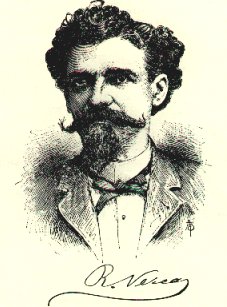Computing History Timeline
Ramon Verea's Internal Multiplication Table
1878 Ramon Verea, living in New York City, invents a calculator with an internal multiplication table
Peggy Aldrich Kidwell tells the remarkable story of Ramón Verea. Born and educated in Spain, Verea moved to Cuba in 1855. There he wrote novels and published a magazine. He came to New York City at the end of the Civil War when he was 32, and he worked on a biweekly Spanish-language newspaper.
Verea also traded Spanish gold and banknotes in New York. That got him interested in calculation. And therein lies a strange story of invention. In 1878 Verea was granted a patent for a calculating machine. Calculators had been tiptoeing into the market since 1820, and they all used repeated addition to multiply. To get 23 times 44 you'd set a machine at 23 and crank it four times to add up four 23s. Then you'd move the crank over and crank it four more times to add on four 230s. The result was 23 times 44.
Verea saw how to do the whole multiplication in one stroke of a lever. The basis of his machine was a ten-sided metal cylinder. Each side had a column of holes with ten different diameters. It worked a little like a Jaquard loom, and it was very clever. By the end of the 19th century mechanical calculators were no longer novelties. And they'd all switched over to once-through systems like Verea's.
 The
machine won a gold medal at a Cuban exhibition. Scientific American
included an article about it. But then the sands closed over it. Verea never
tried to market it. He just walked away and never invented anything else.
The
machine won a gold medal at a Cuban exhibition. Scientific American
included an article about it. But then the sands closed over it. Verea never
tried to market it. He just walked away and never invented anything else.
This brilliant machine was only an object lesson. Verea was angry at his native country for having squandered her talents. Spain grew wealthy on Aztec gold in the 16th century. Since then she'd bought manufactured goods that other countries made. As a boy Verea had watched that going on. Spain had developed no tradition of invention or manufacturing, and she'd grown poor.
Kidwell, P. A., Ideology and Invention: The Calculating Machine of Ramón Verea. Rittenhouse: Journal of the American Scientific Instrument Enterprise, Vol. 9, No. 2, February 1995

